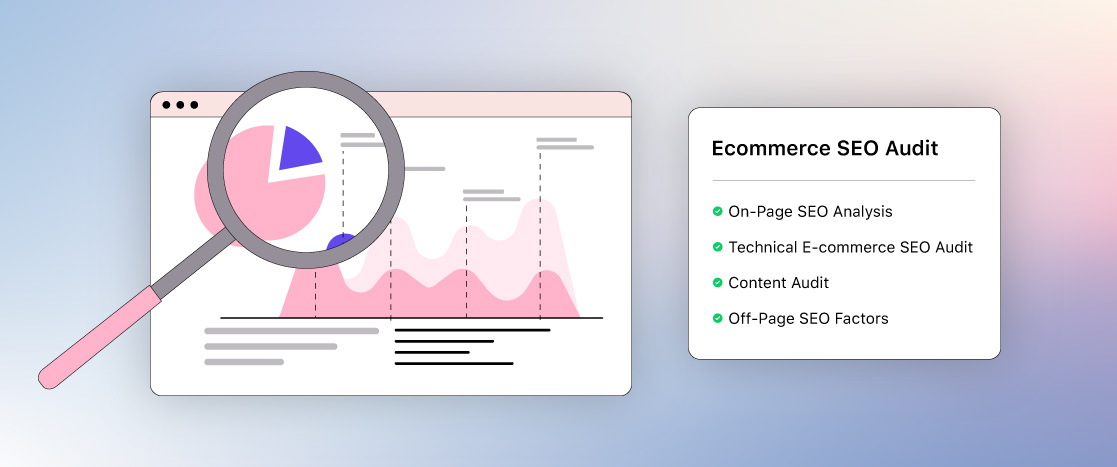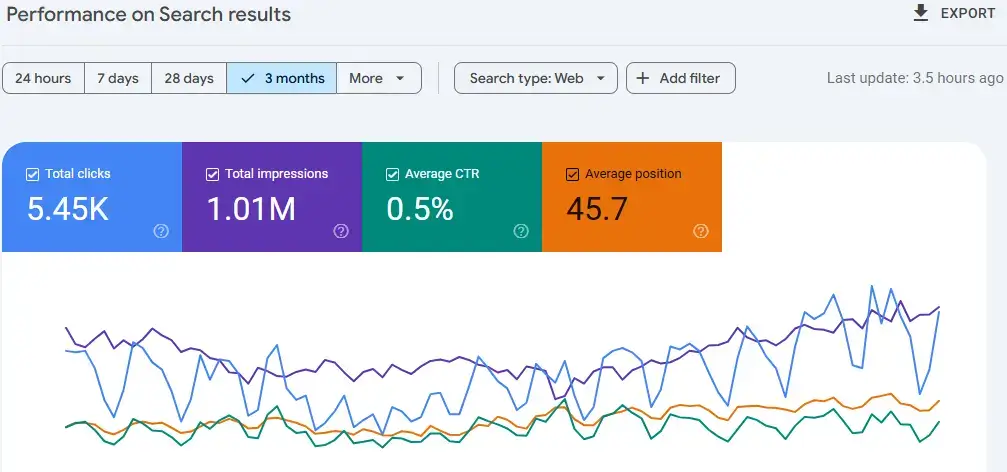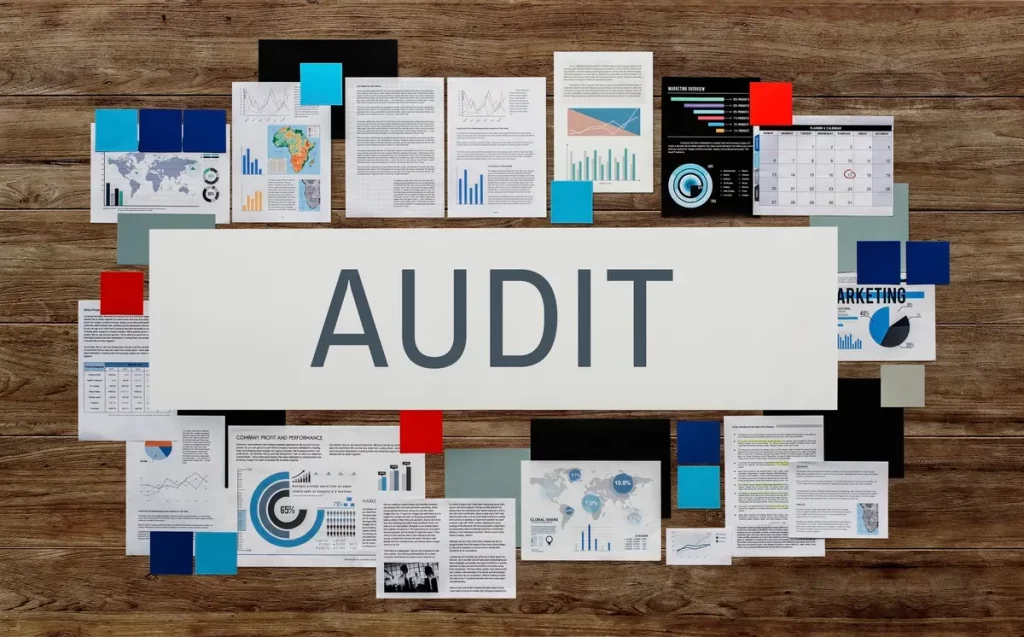
What is Ecommerce SEO Audit: Complete Guide for Store Efficiency
SEO is frequently a question of survival for e-commerce websites. E-commerce websites may depend entirely on organic traffic as their sole steady source of income, but other businesses may view SEO as merely one of the multiple interactions in a customer journey. Ensure that your e-commerce website is as optimized as possible. Doing a regular e-commerce SEO audit is your best chance to ensure this is the case. Ensuring your e-commerce website is visible to search engines and ranks well enough for its target keywords is known as e-commerce SEO. It is similar to SEO for other kinds of websites in that regard.
However, SEO can play a far larger role in e-commerce. With thousands of product pages and dynamic material that is regularly updated and revised, e-commerce websites are extremely complex. However, e-commerce websites—particularly smaller ones with a tighter marketing budget—rely on SEO to attract much-needed clients. One of the quickest and most efficient strategies to draw customers to your eCommerce store is to appear in organic search results. To get your store to appear at the top of search results, you may spend money on pay-per-click (PPC) advertising through networks like Google Ads.

Understanding the Importance of E-commerce SEO Audits
A thorough analysis of your online store’s functionality and condition from an SEO standpoint is called an e-commerce SEO audit, sometimes referred to as an e-commerce site audit. A thorough audit will evaluate your store’s technical performance, off-page SEO components like backlinks, and all of its pages (homepage, category pages, product pages, etc.).
You can identify your website’s advantages and disadvantages as well as areas for improvement in terms of Google and other search engine rankings by conducting an e-commerce SEO site audit.
Even though SEO audits can take a lot of effort, you should do one at least once a year. The money you get from improved rankings ought to cover the cost of conducting an audit.
What Makes an SEO Audit for E-Commerce Essential?
Why is an audit of an e-commerce site necessary? E-commerce has special requirements and factors that must be considered.
Websites for e-commerce are frequently changing. Regularly, old product pages are deleted and new ones are added. Your product category setup, navigational components, “Recommended product” widgets, and other components may also change often. There are a lot of moving parts.
They can be divided into:
- Optimizing product and category pages correctly
- Differentiating your products from those of your competitors
- demonstrating the team’s competence and trust to establish experience and authority
- Ensure that the quality of your items and customer service generates positive review trajectories and that those reviews are appropriately recorded.
Conducting an e-commerce site audit can help you identify technical problems that are keeping your website from ranking, boost its general functionality, and improve user experience.

You can also benefit from other things, such as:
- Increased traffic: You may rank higher in search results and draw in more visitors by making your website search engine-friendly. You can increase organic traffic by following an e-commerce SEO audit.
- Increased conversion rates: You have a better chance of turning visitors into paying clients if you increase the visibility of your website.
- Competitive Advantage: You can stay ahead of the curve and gain a significant competitive advantage over other companies in your sector using SEO.
- Improved ROI: With a higher return on investment, e-commerce SEO can be a valuable investment for your business. That was after an SEO audit found several high-volume keywords were within striking distance, and rankings could be achieved with on-site optimizations, content refreshes, internal links, and off-site content marketing.
Steps to Conduct an SEO Audit for E-Commerce
Would you like to ensure that you finish the most thorough audit possible? Next, adhere to my comprehensive e-commerce SEO assessment checklist, which is provided below.
Before reviewing your existing content and conducting a content gap analysis.
1. On-Page SEO Analysis
On-page SEO analysis is a crucial component of an effective e-commerce SEO audit, focusing on optimizing individual web pages to improve their search engine rankings and enhance user experience. This analysis encompasses several elements, beginning with keyword usage. Identifying and strategically placing relevant keywords within title tags, headers, meta descriptions, and content helps search engines understand the page’s topic and relevance.
Another critical aspect is evaluating meta tags and descriptions. Each page should have unique and compelling tags that accurately represent its content, as these influence both search engine indexing and user click-through rates. Additionally, assessing content quality is essential; product descriptions should be unique, engaging, and informative to effectively communicate value to potential customers.
Moreover, the internal linking structure plays a significant role in on-page SEO. A well-organized internal linking system not only guides users to related products or content but also assists search engines in crawling the site efficiently. Overall, conducting a thorough on-page SEO analysis ensures that each page is optimized for search engines while providing a seamless and informative experience for users, ultimately leading to improved traffic and conversions.
Evaluating Keyword Usage
A vital component of your e-commerce SEO audit is evaluating keyword usage throughout your site. Begin by conducting a comprehensive keyword analysis to determine which keywords are currently driving traffic and which opportunities exist for further optimization. Focus on both short-tail and long-tail keywords that are relevant to your products and audience.
Each product page should be optimized for specific keywords. Ensure that your target keywords appear naturally in title tags, meta descriptions, headers, and throughout the content. Keyword stuffing can lead to penalties from search engines, so prioritize quality over quantity. Aim to create content that answers users’ questions and provides them with valuable information.
Analyzing Meta Tags and Descriptions
Meta tags and descriptions play a crucial role in on-page SEO. Each page on your site should have unique and compelling title tags and meta descriptions that accurately reflect the content. These elements not only help search engines understand the purpose of your pages but also encourage users to click on your listings in search results. Ensure that title tags are within the recommended character limit and contain relevant keywords.
During your audit, check for duplicate meta tags across different pages. Duplicate tags can confuse search engines and dilute the effectiveness of your SEO strategy. Each product and category page should have distinct tags tailored to their content. This approach enhances user experience and improves your chances of ranking higher in search results.
Assessing Content Quality
The quality of your content is paramount to your SEO success. Conduct a content audit to evaluate the uniqueness and relevance of the text on your site. Product descriptions should be detailed and informative, showcasing the benefits and features of each item. Avoid using manufacturer descriptions verbatim, as this can lead to duplicate content issues that negatively impact your SEO.
In addition to product pages, assess the quality of your blog posts and other forms of content marketing. A well-maintained blog can attract organic traffic and establish your site as an authority in your niche. Ensure that your blog content is regularly updated, optimized for relevant keywords, and provides valuable insights to your audience. Engaging and informative content not only improves SEO but also enhances user trust and credibility.
Internal Linking Structure
A strong internal linking structure is crucial for improving on-page SEO. Internal links help search engines crawl your site more efficiently and guide users to related content. During your audit, evaluate the existing internal linking strategy and identify opportunities for improvement.
Make sure that your site has a logical hierarchy, with category pages linking to subcategories and product pages. This not only improves SEO but also enhances user experience by making navigation easier. Use descriptive anchor text for internal links, which provides context to both users and search engines about the linked content.

2. Technical E-commerce SEO Audit
A technical e-commerce SEO audit focuses on the underlying infrastructure of your online store, ensuring that it is optimized for search engines and provides a seamless user experience. This audit examines various technical elements that impact your site’s performance, starting with site speed. Page loading times are crucial; faster sites enhance user satisfaction and reduce bounce rates, directly influencing search engine rankings.
Another critical aspect is mobile-friendliness. With a significant portion of online shopping done on mobile devices, your e-commerce site must be responsive and easy to navigate on smaller screens. Google prioritizes mobile-first indexing, making this an essential factor in your SEO strategy.
Additionally, a thorough audit evaluates the site’s architecture, including URL structure, navigation, and sitemap. Clear, logical navigation helps both users and search engines find relevant content easily. It is also vital to check for crawl errors, duplicate content, and broken links, as these issues can hinder search engine bots from properly indexing your pages.
Finally, implementing structured data markup enhances search visibility by enabling rich snippets in search results. Overall, a technical e-commerce SEO audit identifies and resolves issues that could impede your site’s performance and search engine rankings, laying a strong foundation for your overall SEO strategy.
Ensuring Crawlability and Indexing
Technical SEO is a fundamental aspect of your e-commerce SEO audit. Begin by assessing your site’s crawlability and indexing. Utilize tools like Google Search Console to identify any crawl errors that may prevent search engines from accessing your content. Addressing these issues promptly is essential, as they can significantly hinder your SEO efforts.
Review your robots.txt file to ensure it is properly configured to allow search engines to crawl essential parts of your site. Additionally, generate and submit an XML sitemap to search engines, as this helps them understand the structure of your site and index your pages more efficiently.
Analyzing Site Speed
Site speed is a crucial ranking factor for search engines. Slow-loading pages can lead to higher bounce rates and lower conversion rates. Utilize tools like Google PageSpeed Insights to analyze your site’s loading speed and receive actionable recommendations for improvement. Common strategies to enhance site speed include optimizing images, reducing server response times, and minimizing the use of heavy scripts.
Evaluate your hosting environment as well. A reliable and fast hosting provider can significantly impact your site’s performance. If your site experiences slow loading times consistently, consider upgrading to a better hosting solution or optimizing your current setup.
Mobile Optimization
With an increasing number of users accessing e-commerce sites via mobile devices, mobile optimization is essential. Ensure that your site is fully responsive and provides a seamless experience across various screen sizes. Google’s Mobile-Friendly Test tool can help you assess how well your site performs on mobile devices.
Address any issues that could hinder mobile user experience, such as slow loading times or difficult navigation. A mobile-friendly site not only enhances user satisfaction but also improves your search engine rankings, as search engines prioritize mobile-optimized sites.

Implementing Structured Data
Incorporating structured data is an important part of a technical e-commerce SEO audit. Structured data, also known as schema markup, helps search engines understand your content more effectively. By applying schema markup to your product pages, you can enhance your visibility in search results with rich snippets, which can lead to improved click-through rates.
Structured data can provide search engines with essential information about your products, such as price, availability, and reviews. Implementing this markup not only aids in SEO but also enhances user experience by providing potential customers with additional information directly in the search results.
Ensuring Site Security
Security is paramount for ecommerce sites, especially when handling sensitive customer information. Ensure that your site uses HTTPS to protect data during transactions. Google considers HTTPS a ranking factor, and using a secure connection builds trust with users.
Verify that your site has a valid SSL certificate and address any security vulnerabilities that may exist. Regularly update your site’s software, plugins, and themes to protect against potential security threats. A secure website not only protects your customers but also enhances your credibility and reputation in the online marketplace.
3. Content Audit
A content audit is an essential part of the e-commerce SEO audit process, focusing on evaluating and optimizing the content present on your online store. This systematic review examines the quality, relevance, and effectiveness of your existing content, helping to identify areas for improvement and opportunities for growth.
During a content audit, start by analyzing product descriptions, blog posts, and category pages to assess their uniqueness and engagement levels. Content should be original, informative, and tailored to the target audience’s needs. Look for outdated or low-performing content that may need updates or removal to enhance overall site quality.
Additionally, evaluate keyword usage within your content. Ensuring that relevant keywords are integrated naturally into headings, body text, and meta descriptions helps search engines better understand your content and its relevance to user queries.
Engagement metrics, such as bounce rates, time on page, and social shares, also provide insights into how well your content resonates with visitors. By analyzing these factors, you can develop a strategy to refresh underperforming content, create new material that aligns with current trends, and ultimately improve user experience and SEO performance across your e-commerce site.
Evaluating Content Relevance
Conducting a content audit is essential for assessing the effectiveness of your site’s content. Begin by reviewing the quality and relevance of the content on your product pages. Each page should feature unique, engaging descriptions that accurately convey the product’s features and benefits. Duplicate content can harm your SEO efforts, so avoid using identical descriptions across multiple products.
In addition to product content, assess the quality of your blog and other content marketing efforts. A well-maintained blog can drive organic traffic and position your site as an authority in your niche. Ensure that your blog posts are optimized for relevant keywords, provide valuable insights, and are updated regularly to maintain their relevance.
Utilizing User-Generated Content
User-generated content, such as reviews and testimonials, can significantly enhance your e-commerce site. Reviews not only build trust with potential customers but also contribute to your site’s SEO by providing keyword-rich content. Encourage customers to leave reviews and display them prominently on product pages. Positive reviews can influence purchasing decisions and improve conversion rates.
Address negative reviews promptly and professionally. This demonstrates excellent customer service and can mitigate any damage to your brand’s reputation. Engaging with customers who leave feedback shows that you value their opinions and are committed to improving their experience.
Analyzing Content Performance
To measure the effectiveness of your content, analyze its performance using tools like Google Analytics. Look for metrics such as page views, bounce rates, and average time on the page to gauge user engagement. Identify high-performing content and determine what factors contribute to its success. This insight can inform your future content strategy.
For underperforming content, consider updating it with fresh information, optimizing it for relevant keywords, or repurposing it into different formats. Regularly reviewing and updating your content ensures that it remains relevant and valuable to your audience.

4.Off-Page SEO Factors
Off-page SEO factors play a critical role in enhancing the visibility and authority of your e-commerce website beyond its own content. These factors primarily involve external activities and signals that influence how search engines perceive your site’s credibility and relevance. One of the most significant elements is backlinking, which refers to the acquisition of links from other reputable websites to your site. High-quality backlinks serve as endorsements, signaling to search engines that your content is trustworthy and valuable.
Social media engagement is another important off-page factor. A strong presence on platforms like Facebook, Instagram, and Twitter can drive traffic to your e-commerce site and foster brand awareness. Sharing quality content and engaging with followers helps build community and can lead to increased organic traffic.
Online reviews and reputation also significantly impact off-page SEO. Positive reviews on platforms like Google My Business, Yelp, and Trustpilot can enhance your brand’s credibility and influence potential customers’ purchasing decisions.
Furthermore, participating in industry forums and contributing guest posts to authoritative blogs can establish your expertise and further improve your link profile. By focusing on these off-page SEO factors, you can enhance your e-commerce site’s authority, boost search engine rankings, and ultimately drive more traffic and conversions.
Evaluating Backlink Profile
Off-page SEO involves factors that occur outside your website but significantly impact your search engine rankings. An important aspect of your e-commerce SEO audit should include an analysis of your backlink profile. High-quality backlinks from authoritative sites can enhance your site’s credibility and boost its rankings.
Use tools like Ahrefs or Moz to evaluate your backlink profile. Identify any low-quality or spammy links that may harm your SEO performance and take steps to disavow them. Focus on building high-quality backlinks through strategies such as guest blogging, influencer collaborations, and creating shareable content.
Monitoring Brand Mentions
Brand mentions can also impact your site’s SEO. Even unlinked brand mentions can contribute to your site’s authority and recognition. Utilize tools like Google Alerts to monitor brand mentions and engage with users discussing your brand on social media and forums. Responding to mentions can help foster community engagement and build brand loyalty.
Consider reaching out to sites that mention your brand but do not link to your site. A polite request for a link can help improve your backlink profile and enhance your site’s authority.
Social Media Presence
While social media signals are not direct ranking factors, a strong social media presence can drive traffic to your e-commerce site. Evaluate your social media strategy and ensure it aligns with your overall brand message. Regularly share engaging content, promotions, and updates to keep your audience informed and engaged.
Consider leveraging paid advertising on social media platforms to increase visibility and reach a broader audience. Monitor the performance of your social media campaigns and adjust your strategy based on engagement metrics.
5. Final Steps in Your E-commerce SEO Audit
After completing your e-commerce SEO audit, it is crucial to consolidate your findings and create a strategic action plan. This involves compiling insights from all audit components—technical SEO, on-page factors, content quality, and off-page elements—into a comprehensive report. This report should highlight strengths, weaknesses, and specific opportunities for improvement, enabling you to make informed decisions moving forward.
Once your findings are organized, prioritize the recommended changes based on their potential impact and the resources required for implementation. For example, fixing critical technical issues should take precedence over less urgent content updates. Establish clear, measurable goals for each action item, such as increasing organic traffic by a specific percentage or improving keyword rankings for targeted products.
After implementing the necessary changes, continuously monitor your website’s performance using analytics tools. Track key performance indicators (KPIs) like organic traffic, bounce rates, and conversion rates to evaluate the effectiveness of your SEO efforts. Regularly revisiting your audit findings and updating your strategies based on performance metrics will ensure your e-commerce site remains competitive in search rankings and continues to meet the evolving needs of your audience. This ongoing process is vital for maintaining and enhancing your online presence over time.
Creating an Action Plan
After completing your e-commerce SEO audit, compile your findings into a comprehensive report. This report should highlight areas of strength, weaknesses, and opportunities for improvement. Use the insights gained during the audit to create a detailed action plan that outlines specific steps to enhance your site’s SEO performance.
Set measurable goals for your action plan, such as increasing organic traffic by a certain percentage or improving keyword rankings for specific products. Regularly review and update your action plan based on ongoing performance metrics and industry changes.
Implementing Changes and Monitoring Performance
Once your action plan is in place, begin implementing the recommended changes. Prioritize tasks based on their potential impact and ease of implementation. For instance, addressing technical issues may take precedence over content updates, as technical SEO is foundational to your site’s performance.
After implementing changes, continuously monitor your site’s performance using analytics tools. Track key performance indicators (KPIs) such as organic traffic, bounce rates, and conversion rates to assess the effectiveness of your SEO efforts. Regular monitoring will allow you to adapt your strategy as needed to achieve optimal results.
Conclusion
Conducting a comprehensive ecommerce SEO audit is a vital process for optimizing your online store and enhancing the overall user experience. This audit serves as a systematic approach to evaluating every facet of your site’s SEO performance, including on-page elements, technical configurations, content quality, and off-page factors. By meticulously assessing these components, you can identify areas for improvement, ensuring that your site aligns with the best practices necessary for search engine visibility.
Moreover, prioritizing SEO efforts and implementing the strategies derived from your audit findings can significantly enhance your site’s visibility in search results. This increase in visibility translates into higher organic traffic, which can lead to improved conversion rates and ultimately boost sales. In essence, a thorough ecommerce SEO audit not only improves your website’s search performance but also fosters a more satisfying experience for your users, paving the way for long-term success in the competitive world of e-commerce.
FAQs
How Do You Conduct SEO Audits?
Using tools to crawl the website and find challenges like duplicate content, broken links, and slow loading speeds, you must thoroughly examine a website’s technical aspects, on-page optimization, and backlink profile. Then, you must evaluate the website’s overall structure and keyword usage to identify areas where search engine ranking visibility needs to be improved.
What Tools Can I Use To Conduct SEO Audits?
Here are several that you could try: Google Search Console Ubersuggest Woorank SEO SiteCheckup Seoptimer. Remember that although these tools might offer great information and insights, what matters most is producing relevant, high-quality content that satisfies customers’ demands.
How long does an SEO audit take?
Depending on the size of your website and the audit, SEO audits can take anywhere from a single hour to six weeks. They cover sitemaps, backlinks, duplicate content, term cannibalization, site architecture, crawling and indexing concerns, compliance issues, and the opportunity to conduct a competition study.
When should you conduct an ecommerce SEO audit?
To proactively detect and solve possible issues affecting your ranking in search engines to preserve optimal performance, you need to conduct an ecommerce SEO audit whenever you see an important decline in organic traffic, make important modifications to your website, launch new lines of products, experience algorithm updates, or at least every six months to a year.







